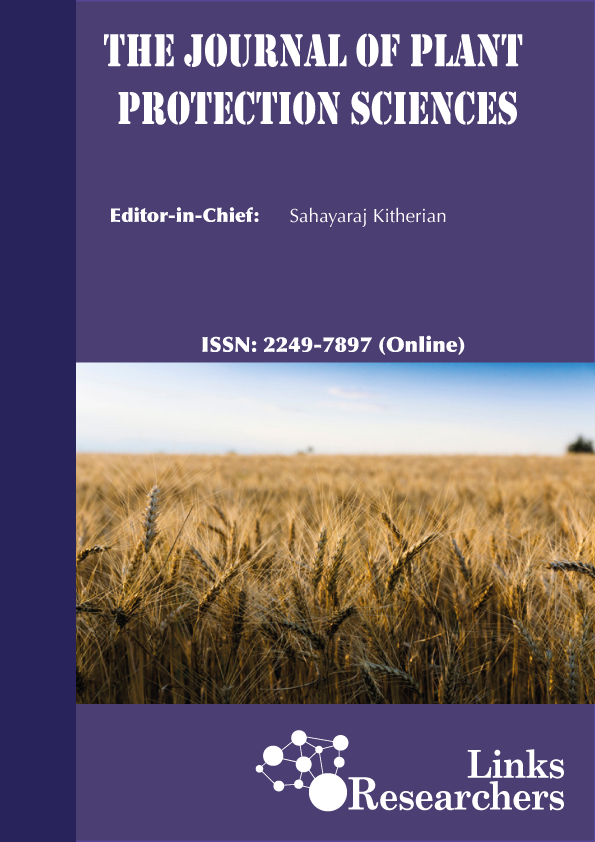Manzoor Hussain*, Miloslav Zouhar and Pavel Rysanek
Manzoor Hussain*, Miloslav Zouhar and Pavel Ryšánek
Manzoor Hussain*, Miloslav Zouhar and Pavel Ryšánek
Manzoor Hussain*, Miloslav Zouhar and Pavel Ryšánek
Sana Irshad Khan1*, Zafar Iqbal2, Hamid Ullah Shah2 and Shaukat Hussain3
B. Ramanujam, R. D. Prasad, S. Sriram and R. Rangeswaran
1Parvin Noor and 2Md. Nashir Uddin
A. K. Chaubey and Satyandra Kumar
S. K. Dutta, S. Roy Chowdhuri, D. Pandit and A. K. Bajpai
Ayesha Aihetasham*, Faiza Qayyum and Muhammad Xaaceph
Baharullah Khattak1*, Saifullah2, Shaukat Hussain2, Musharraf Ahmad2, Asad Ali2, Mohammad Junaid2, Ijaz Ahmad Khan3, Taj Ali Khan1 and Mubbashir Hussain1
Dilara Abbas Bukhari1, Abdul Rehman2*
Javed Asghar Tariq1*, Bashir Ahmed2, Manzoor Ali Abro2, Muhammad Ismail1, Muhammad Usman Asif1 and Raza Muhammad1
Awais Ahmed Khan1*, Zafar Iqbal1 and Muhammad Atiq2
Grigory Antonovich Nozdrin1*, Regina Gabdrahmanovna Utkina2, Anastasia Aleksandrovna Lelyak2 and Yana Viktorovna Novik1
Hafiz Abdul Ghafoor1*, Muhammad Afzal1, Muhammad Luqman2, Muhammad Arshad Javed2, Syed Wasim Hasan3 and Muhammad Zeeshan Majeed1
Maryam Yousaf1, Salman Ahmad1*, Romana Anjum2 and Muhammad Zeeshan Majeed3
Mohsen M. Elsharkawy1, Salem H. Homayed1, Mohamed M. Elsawy2 and Amr A. Khedr1
Shimaa A. Khalaf1 , Mohsen M. Elsharkawy2, Samir A. Sidaros2, Shawky A. El Kewey2, Ayman F. Omar2, Ali Hamed1
Muhammad Madni Afzal1*, Shahbaz Talib Sahi1, Amer Habib1, Waqas Ashraf2, Muhammad Ahmad Zeshan3, Muhammad Raheel2 and Qaiser Shakeel2
Ramy S. Yehia1,3, Essam A. Shaalan2* and Hashem M. Al-Sheikh1
Amir Abdullah Khan and Muhammad Irfan*
A.H. Choshali1, S. Rezaee2, S. Jamali3, H. Reza3, Zamanizadeh4 and F. Rejali5
M. M. A. Youssef †and Wafaa M. A. El-Nagdi
F. Shahina† and G. Mehreen
Najam-ul-Sehar Afshan1*, Javeria Majeed1, Abdul Rehman Niazi1, Saima Khanum2, Maria Riaz1, Muhammad Fiaz2 and Shaila Anjum1
Aqleem Abbas1, Mustansar Mubeen2, Yasir Iftikhar2, Qaiser Shakeel3*, Hafiz M. Imran Arshad4, Maria del Carmen Zuñiga Romano5 and Sarfaraz Hussain6
Sumbal Nazir1*, Farkhanda Manzoor2, Ishrat Perveen3, Anum Rana2, Irum Naureen1, Abad Ali Nadeem3 and Hafiza Najma Naeem2
Imran Nadeem1, Qurban Ali1, Muhammad Kamil Malik1*, Asad Aslam1, Imran Tariq2, Muhammad Bilal Bin Iqbal1, Muhammad Faheem Akhtar1, Sikander Ali3, Muhammad Jawad Saleem1, Muhammad Zubair3 and Aqsa Abbas1
Bdour Muhammed Al-Shweily1*, Jawad Bulbul Al-Zaidawi2, Muhammed Jubair Hanawi1
Sidra Hafeez1, Tayyaba Sanaullah2, Hafsa Naeem3, Mah Noor Hassan4, Muttalib5, Farhana Kausar6, Muhammad Salman Hameed7*, Muhammad Anayat Ullah8, Abdul Samad9, Memoona Bashir10 and Sadaf Shabbir11
Turrini Yudiarti*, Sugiharto Sugiharto, Endang Widiastuti, Hanny Indrat Wahyuni, Tri Agus Sartono, Maulana Hamonangan Nasution
S.Y.M. Mahmoud1 and M. Hashem2
MAHRUKH SHAHID1, KHAJISTA JABEEN1* & SUMERA IQBAL1
Arshad Javaid, Amna Ali, Iqra Haider Khan and Amna Shoaib
Iqra Haider Khan1, *Arshad Javaid1 and Nadeem Shad1












